
Transit Briefs: LACMTA, MBTA, Metro Transit, SEPTA, Trinity Metro
Written by Marybeth Luczak, Executive Editor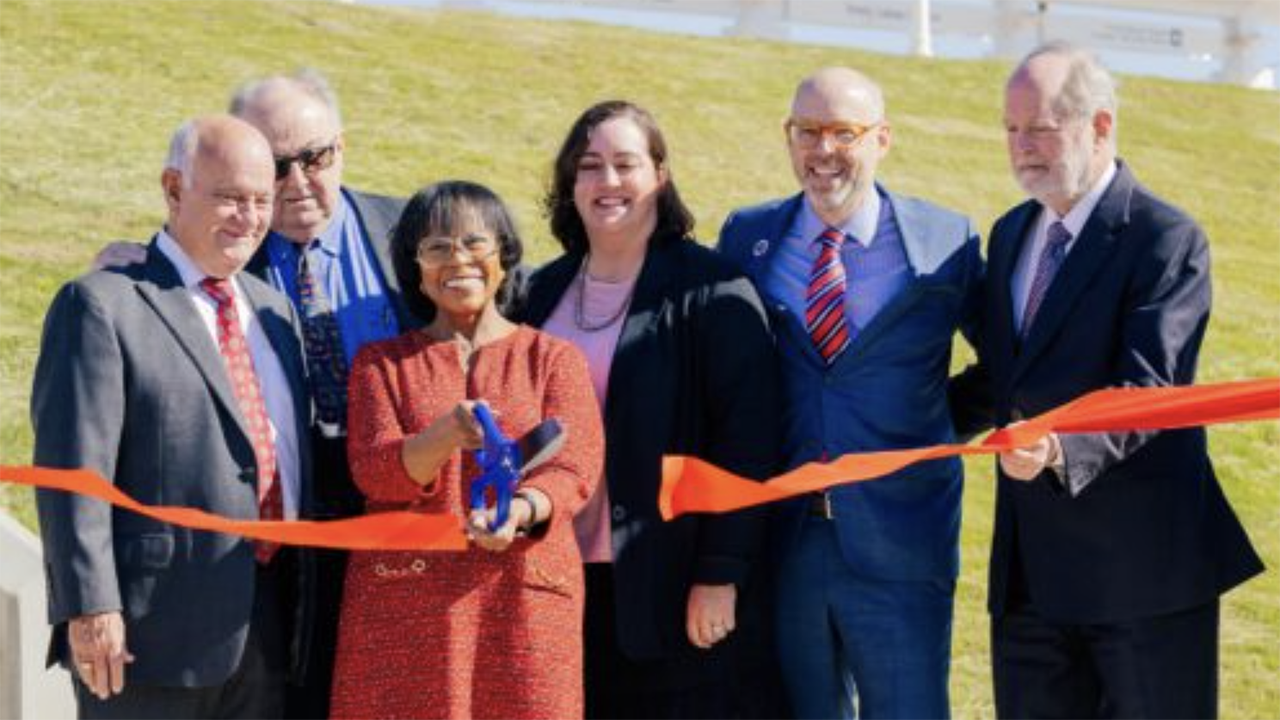
Trinity Metro was joined by representatives of the Federal Transit Administration, Tarrant County Commissioners Court, Fort Worth City Council and other leaders and stakeholders across North Texas to open the Trinity Lakes Station for Trinity Railway Express. Trinity Metro President and CEO Richard Andreski (second from left) was in attendance. (Trinity Metro Photograph)
The Final Environmental Impact Statement/ Environmental Impact Report (EIS/EIR) is now available for Los Angeles County Metropolitan Transportation Authority’s (LACMTA) planned 14.5-mile light rail line between Los Angeles and the city of Artesia, Calif. Also, the Massachusetts House budget is slated to include “record” funding for Massachusetts Bay Transportation Authority (MBTA); Metro Transit of Minneapolis-St. Paul is upgrading its contactless fare system; Southeastern Pennsylvania Transportation Authority (SEPTA) officially opens the rebuilt and renamed Drexel Station at 30th Street and unveils new fare gate pilot program; and Trinity Metro hosts a grand-opening event for the new Trinity Railway Express station in Fort Worth, Tex.
LACMTA
LACMTA and the Federal Transit Administration (FTA) recently released the Final EIS/EIR for the Southeast Gateway Line (formerly known as the West Santa Ana Branch Transit Corridor Project). The transit agency reported that its planned 14.5-mile light rail line (see map below) would span from Slauson/A Line Station in the unincorporated community of Florence-Firestone in Los Angeles to the future Pioneer Station in the city of Artesia (see map below).
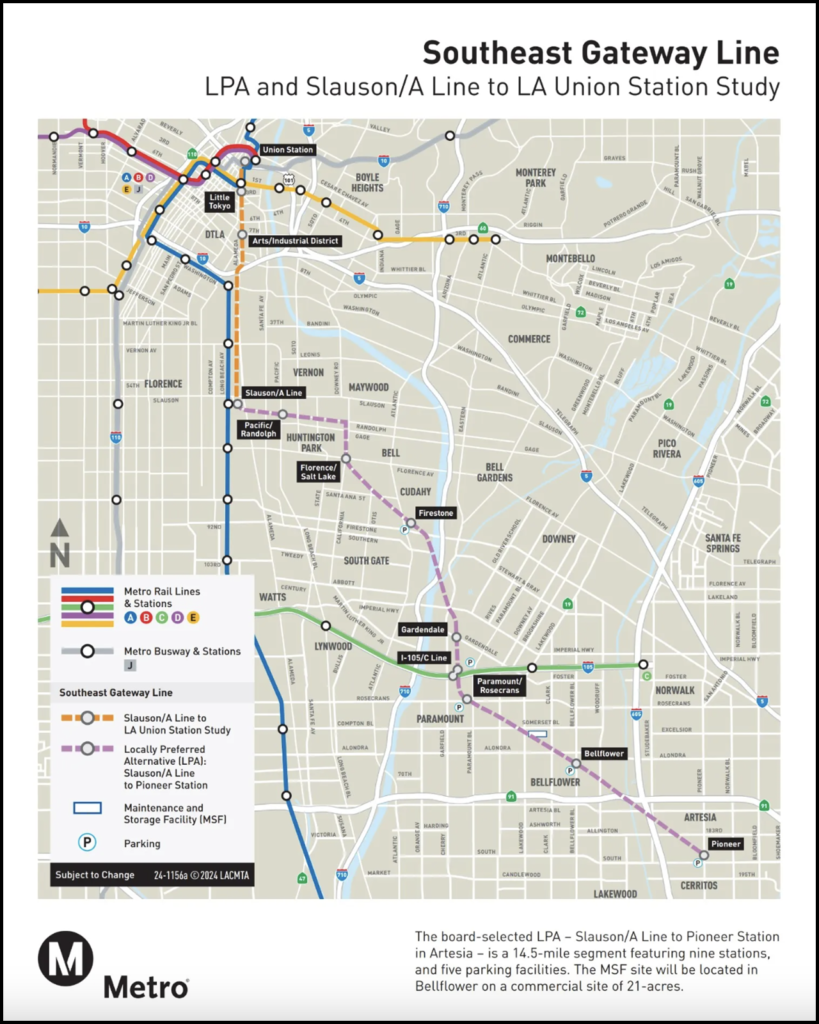
According to LACMTA, 1,300-plus-page EIS/EIR evaluates the project from multiple perspectives, covering its historical background, potential environmental effects, and its importance for communities throughout Los Angeles County. It also evaluates the LACMTA Board of Directors-selected route (i.e., the Locally Preferred Alternative/LPA) as well as other alternatives; contains an analysis of transportation connections and strategies “to reduce traffic congestion and advance fairness and environmental responsibility”; and includes public comments received on the Draft EIS/EIR, which was circulated for public review and comment from July through September 2021, and responses to those comments.
In the coming months, the LACMTA Board is expected to consider certifying the Final EIR. Concurrently, the FTA will issue a Record of Decision (ROD) in summer 2024—allowing the transit agency to move forward with design, acquisitions and construction––following a mandatory 30-day waiting period post-publication of the Final EIS, according to LACMTA.
MBTA
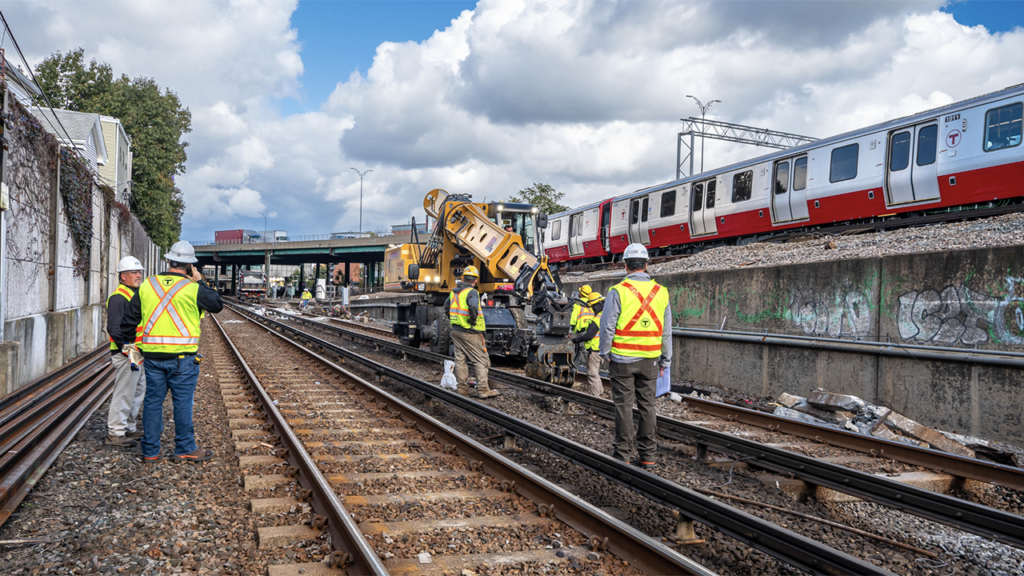
The Boston Herald on April 9 reported that the Massachusetts House fiscal 2025 budget “will include ‘record’ investment into the state’s beleaguered and aging transportation systems, according to House Speaker Ron Mariano’s office.”
The budget, coming out of the House Ways and Means committee on April 10, will include $555 million for MBTA, with $314 million going toward its operating budget, $75 to capital improvements, $65 million to “projects that address safety concerns … related to the findings of the Federal Transit Administration’s Safety Management Inspection initiated in April 2022,” $40 million for a new MBTA Academy to bolster “workforce development efforts”, $20 million “to implement Gov. Maura Healey’s proposal for reduced fares for low income riders,” $35 million for “capital improvements related to climate readiness,” and $5 million in ferry service grants; plus $184 million for regional transit authorities, according to the newspaper.
“‘Ensuring that the Commonwealth is equipped with a safe and reliable public transportation system is critical for the prosperity of our residents and communities, and will be vital in our future efforts to grow the economy. That’s why the House is proposing a record investment in the MBTA, an investment that will allow the new leadership at the T to meet the immense challenges that they face head on,’ Mariano said in a statement,” the newspaper reported.
Transportation spending in the House plan “represents an increase of 41% over fiscal 2024,” according to the Boston Herald. “The cost of the increased spending will come from the general fund and from money made off the state’s Fair Share Amendment, or Millionaire’s Tax, which taxes incomes over $1 million an extra 4%.”
The newspaper said that the “full House version of Gov. Maura Healey’s $56.1 billion spending proposal” will be issued April 10 “and go up for debate on April 24.”
Metro Transit

Minneapolis-St. Paul’s Metro Transit has awarded Cubic Transportation Systems (CTS) a contract to upgrade its Go-To Contactless Fare System. By leveraging the CTS Urban Mobility processing platform, Metro Transit’s 40 million annual riders will be able to tap their contactless bank cards, including those residing in Apple Pay and Google Pay, to pay for fares with no need to separately procure a dedicated smart card or ticket, CTS reported April 9.
For riders not carrying or wishing to use such bank-issued products, CTS said the Go-To card will allow them to load fare products such as stored value and period passes to their accounts via vending machines, the web and retail outlets.
According to CTS, the upgrade includes replacing the agency-hosted back-office fare management software with the most recent Cubic enterprise management system, to reside in the Microsoft Azure Cloud. The new platform, the supplier said, “includes the latest release of Cubic payment gateway software (Cubic Payment Application) that is network certified to meet both PCI and EMV requirements and includes the processing logic to encrypt and protect bankcard data, allow flexible fare pricing, and aggregate fare transactions to control processing costs.”
Additionally, CTS said the platform is designed to support a range of open interfaces, allowing “for flexible extensions over time including more powerful smart phone utilities and integration with additional modalities such as micro-transit, ride share, car share and parking.”
The complete range of fare terminals, including those on more than 2,000 regional buses and across 140 Light Rail, Bus Rapid Transit and Commuter Rail stations, will be upgraded with the latest reader/processor technology, CTS said, which will enable the new features supported by the Cloud Based System. Buses will receive new multi-media contactless fare validators, while station equipment will be “upgraded in place.”
As part of the agreement, CTS said it will provide Metro Transit with application support services for five years from launch.
“These enhancements provide significant improvement in convenience for our visitors, tourists, and occasional riders while preserving a full range of incentive and concession capabilities for all user groups,” said Dennis Dworshak, Senior Manager, Fare Collections for Metro Transit.
“For nearly 20 years, Cubic has proudly worked with Metro Transit on Go-To, providing regional transit riders the ability to use a contactless smart card to pay fares across the Twin Cities’ Light Rail, Bus Rapid Transit and Commuter Rail operations,” said Matt Newsome, CTS Senior Vice President and General Manager. “These upgrades will not only foster a more efficient Metro Transit, but one that enables a broad range of new rider conveniences to the traveling public.”
SEPTA
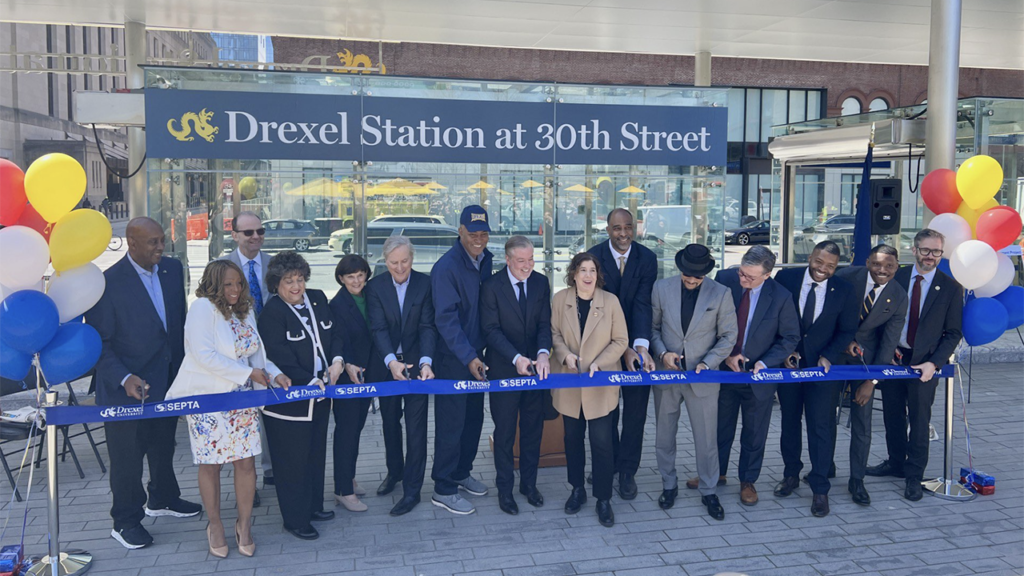
SEPTA on April 9 joined Drexel University and local, state, and federal officials to celebrate the newly reconstructed and renamed Drexel Station at 30th Street with a ribbon ceremony.
Located at the intersection of 30th & Market Streets in West Philadelphia, the station is served by the Market-Frankford Line; five Trolley lines; the LUCY Loop; and Bus Routes 9, 30, 31, 44, 78, 124, and 125. It also offers connections to Regional Rail at the nearby William H. Gray III 30th Street Station.
Renovations were completed as part of the project to better integrate the station into Drexel Square and the broader Schuylkill Yards district, according to SEPTA. Improvements included a new glass headhouse and canopy; upgraded elevators, escalators and stairs to improve accessibility; a modernized and expanded mezzanine with enhanced lighting and improvements to connections between transit services; and new flooring and tiling throughout. The station is the first to debut the transit agency’s new signage, as part of the SEPTA Metro Wayfinding initiative.
The work was funded in part through a $15 million U.S. Department of Transportation Better Utilizing Investments to Leverage Development (BUILD) Grant and $34.2 million in Pennsylvania Department of Transportation funding, which was made possible by Pennsylvania Act 89.
According to SEPTA, Drexel Station at 30th Street is part of the first phase of the Schuylkill Yards development, Brandywine Realty Trust’s “innovation district.”
“To support these development initiatives and the plans for the redevelopment of Amtrak’s 30th Street Station,” SEPTA said it nearly doubled the Drexel Station at 30th Street station capacity.
“This transformative project would not have been possible without the partnership and commitment of Brandywine Realty Trust and Drexel University which provided important backing and financial support for the project and our successful application for federal grant funding,” SEPTA Board Chair Kenneth E. Lawrence Jr. said. “SEPTA is pleased that this state-of-the-art station now bears Drexel University’s name—a testament to the strength of our partnership and SEPTA’s value to the city and region.”
“The reconstruction of this flagship station will not only improve mobility and enhance access for SEPTA customers; it also demonstrates how transit infrastructure investments build communities and support regional economic growth,” SEPTA General Manager/CEO Leslie S. Richards said.
“We’re proud to join the celebration of the opening of the station that will serve as the gateway for so many of our students, faculty, professional staff, and community partners as they arrive on campus,” said John Fry, President of Drexel, which was one of the first SEPTA Key Advantage partners in 2022. “As new educational, research, and business development opportunities continue to grow in West Philadelphia, it is fitting for Drexel to welcome everyone to University City.”
Meanwhile, NBC10 Philadelphia reported that SEPTA kicked off a $1 million pilot program on April 3, installing the first of 20 new fare gates on the Market-Frankford and the Norristown High Speed lines to deter “fare evaders,” who cost the agency $30 million to $40 million in annual revenue. The program was first announced in spring 2023.
According to the media outlet, Leslie Richards at 69th Street in Upper Darby demonstrated gate operation and “explained that the top of the gate contains 3-D technology that can detect when a fare evader is following behind a paying customer.”
That information is sent in real time to SEPTA police dispatch and SEPTA cameras “will pick up images of the person,” reported NBC10 Philadelphia. Richards told the media outlet “that she thinks these new gates and the new technology will stop more serious crimes from happening on SEPTA.”
“We can trace back every instance of crime and large amounts of disorder to a fare evasion point of entry. We do this repeatedly,” SEPTA Transit Police Department Chief Chuck Lawson said, according to the media outlet.
Trinity Metro
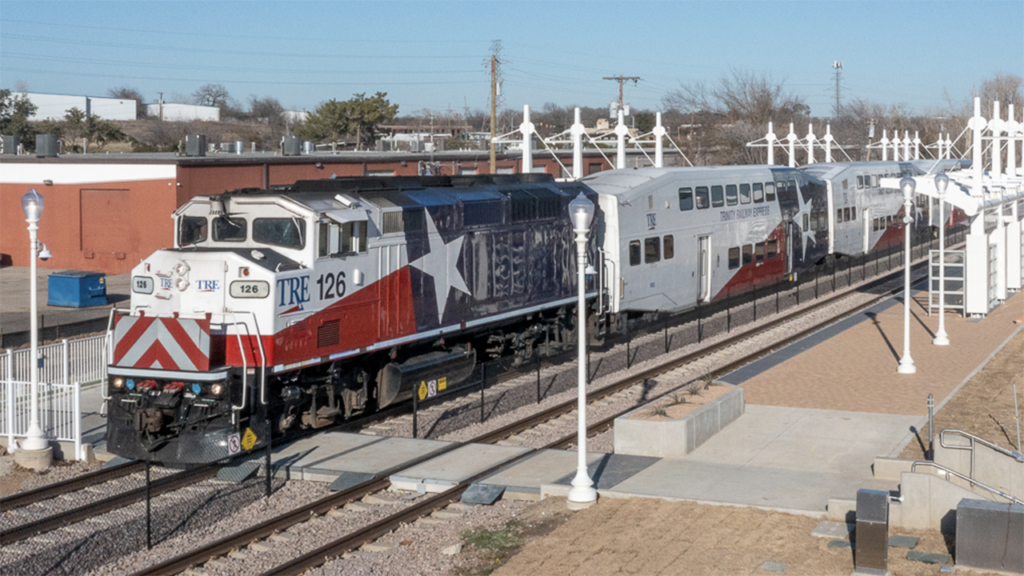
Trinity Metro on April 5 officially opened the Trinity Lakes Station in east Fort Worth, one of 10 stops for Trinity Railway Express (TRE), the 34-mile commuter rail line offering service between Fort Worth and Dallas. TRE is jointly owned and operated by Trinity Metro and Dallas Area Rapid Transit.
The new station is part of Trinity Lakes, a 1,600-acre master planned community that includes retail and residential transit-oriented development, and offers TRE riders connectivity to two Trinity Metro bus routes, including service to Tarrant County College Northeast Campus.
“This train station is about mobility; it’s about connecting communities,” said Trinity Metro President and CEO Richard Andreski, who is serving as the closing speaker for Railway Age’s Young Professionals Conference, to be held virtually on May 9. “What this station represents is the future of our city. People depend on reliable transportation to get to work, to visit family and to participate in their community—and rail transit is a big part of that.”
Trinity Metro is a regional transportation system that provides bus, TEXRail commuter rail, ACCESS paratransit, ZIPZONE on-demand rideshare, Fort Worth Bike Sharing, vanpool and TRE services.



